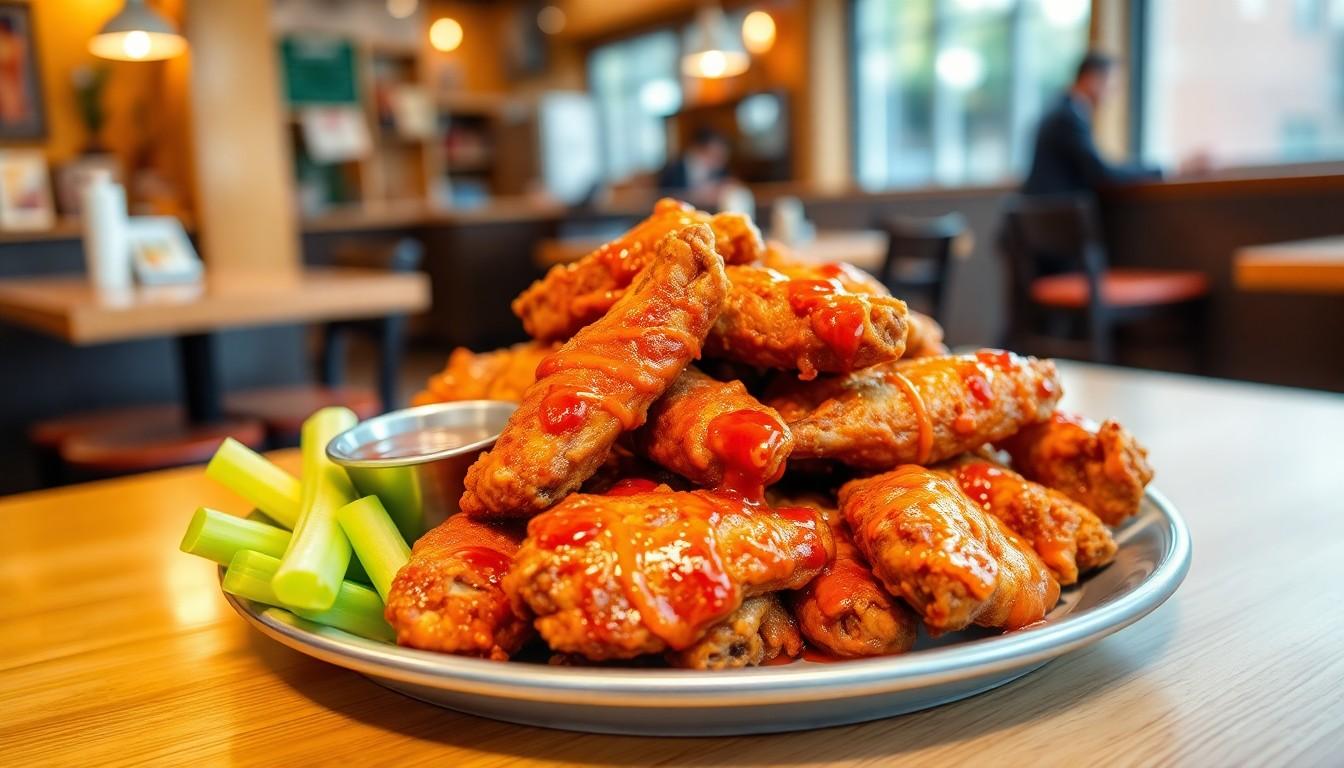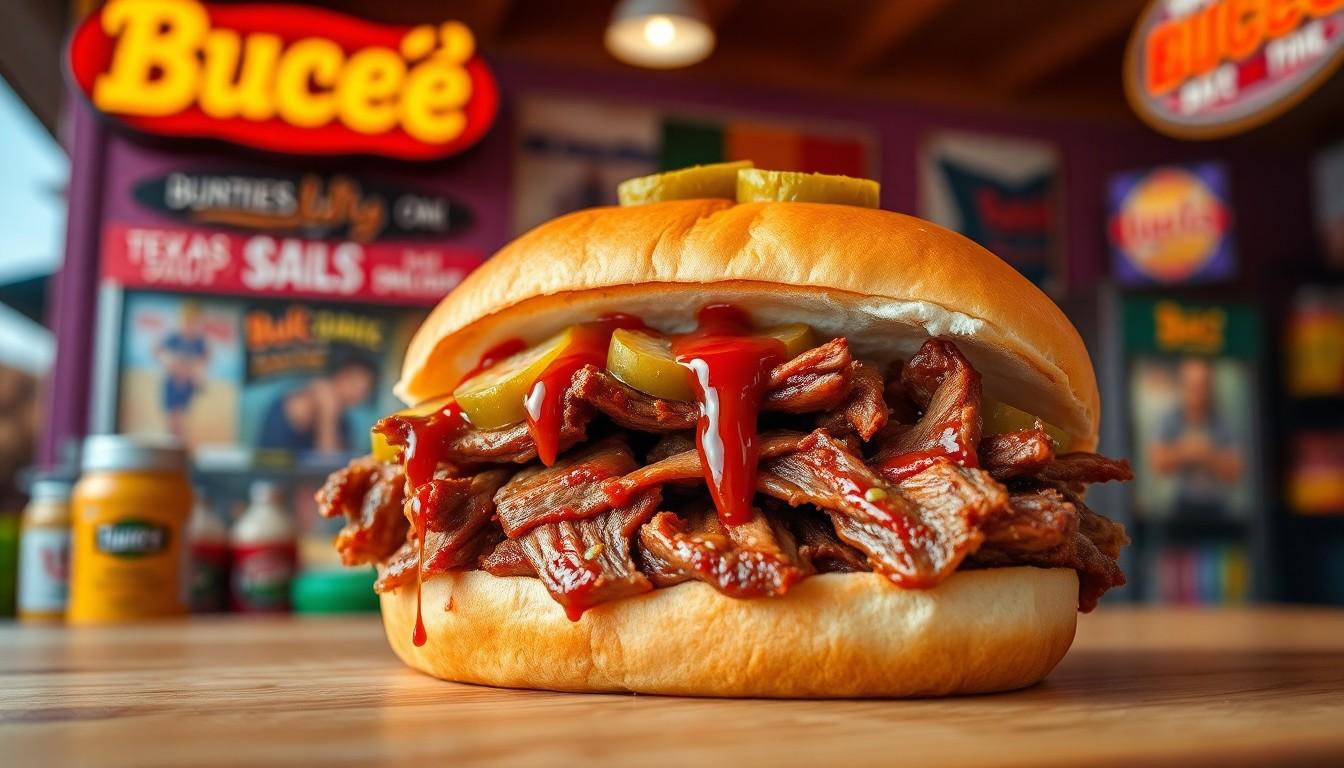Key Takeaways
- Wingstop does not use hemp oil in any of their food preparation, opting instead for traditional cooking oils to maintain flavor integrity.
- The main oils used by Wingstop include soybean oil, canola oil, and peanut oil, chosen for their high smoke points and flavor enhancement.
- Wingstop’s commitment to quality means they only use fresh, never frozen chicken, ensuring optimal taste and texture in their wings.
- The chain offers a diverse range of wing flavors, allowing customers to enjoy unique taste experiences tailored to different palates.
- Customer feedback consistently highlights satisfaction with Wingstop’s flavor profiles, attributing them to the quality of the oils and seasonings used in cooking.
- Alternative cooking oils such as olive oil, coconut oil, and avocado oil provide various culinary benefits and flavors suitable for different cooking methods.
If you’ve ever wondered about the ingredients in your favorite Wingstop wings, you’re not alone. As food trends evolve, many people are curious about the health benefits of different oils, including hemp oil. With its rising popularity, you might be asking: does Wingstop use hemp oil in their cooking?
The answer is no. Wingstop doesn’t use hemp oil in their food preparation. Instead, they focus on traditional cooking oils to ensure that their wings maintain that signature flavor you love. Understanding what goes into your meals can enhance your dining experience, so let’s dive deeper into Wingstop’s ingredient choices and what they mean for your next order.
Overview of Wingstop
Wingstop, founded in 1994, specializes in chicken wings with a variety of flavors and sauces. The chain operates over 1,700 locations across the United States and internationally. Wingstop’s menu revolves around freshly made, cooked-to-order wings, providing customers with an option to enjoy them tossed in their choice of 11 signature sauces, ranging from bold to mild.
Key Ingredients
Wingstop prioritizes high-quality ingredients to maintain its distinct taste. The primary oils used in cooking wings include:
| Oil Type | Usage |
|---|---|
| Soybean Oil | Main oil for frying the wings |
| Canola Oil | Alternative for frying |
| Peanut Oil | Used for specific cooking methods |
These oils are chosen for their high smoke points, enabling proper frying while enhancing flavor without overpowering the wings.
Flavor Varieties
Wingstop offers diverse flavors to cater to different palates. Popular flavors include:
- Original Hot
- Lemon Pepper
- Garlic Parmesan
- Caribbean Jerk
Each flavor incorporates specific seasoning and spices, ensuring unique taste experiences that keep customers coming back for more.
Commitment to Quality
Consistent commitment to quality ingredients sets Wingstop apart from other wing restaurants. The chain focuses on fresh, never frozen chicken, ensuring optimal taste and texture. Regular reviews of suppliers and ingredients further highlight Wingstop’s dedication to food quality and safety.
Customer Experience
Wingstop enhances customer experience through a variety of menu options, including:
- Wings
- Boneless Wings
- Chicken Tenders
- Sides
Providing both dine-in and takeout options, Wingstop caters to different dining preferences, making it a popular choice for casual meals or game day gatherings.
Understanding Wingstop’s ingredient choices and flavor differentiation promotes a better dining experience, allowing you to select wings that best suit your preferences without concern for the use of hemp oil.
Hemp Oil: An Introduction
Hemp oil, derived from hemp seeds, is known for its distinct nutritional profile and potential health benefits. It’s important to understand its definition and applications, especially regarding its role in the food industry.
Definition and Benefits
Hemp oil is cold-pressed from seeds of the hemp plant (Cannabis sativa). It contains a rich blend of essential fatty acids, including Omega-3 and Omega-6, which are crucial for maintaining heart health and reducing inflammation. Additionally, hemp oil provides vitamins and antioxidants that support overall wellness. Its unique properties may aid in skin conditions and boost metabolic health.
| Nutrient | Amount per 100g |
|---|---|
| Omega-3 Fatty Acids | 7.0 g |
| Omega-6 Fatty Acids | 55.0 g |
| Protein | 25.0 g |
| Vitamin E | 0.6 mg |
Common Uses in Food Industry
Hemp oil finds various applications in the food industry due to its nutritional content and flavor profile. It’s commonly used as a salad dressing, cooking oil, and ingredient in health foods like energy bars. Many food manufacturers appreciate its nutty flavor, enhancing dishes without overpowering other ingredients. Moreover, it often serves as a vegan alternative to dairy and animal-based oils in recipes.
| Application | Description |
|---|---|
| Salad Dressings | Provides a nutty flavor and healthy fats |
| Cooking Oil | Ideal for low to medium-heat cooking |
| Health Foods | Used in energy bars, smoothies, and snacks |
| Vegan Alternatives | Serves as a substitute for butter or cream |
Does Wingstop Use Hemp Oil?
Wingstop doesn’t use hemp oil in its cooking processes. The chain favors traditional oils that maintain the flavor integrity of its wings.
Official Statements from Wingstop
Wingstop’s official communication consistently clarifies that it does not incorporate hemp oil into its recipes. The main frying oil used is soybean oil, chosen for its high smoke point and flavor enhancement. Canola and peanut oils are also utilized, ensuring optimal cooking conditions for their chicken wings. Here’s a summary of the oils used at Wingstop:
| Oil Type | Purpose | Smoke Point (°F) |
|---|---|---|
| Soybean | Main frying oil | 450 |
| Canola | Alternative frying oil | 400 |
| Peanut | Alternative frying oil | 450 |
Customer Experiences
Customer feedback reinforces that Wingstop does not use hemp oil. Many patrons express satisfaction with the wings’ flavor profiles, which are attributed to the oils and seasonings employed. Numerous reviews indicate a preference for the unique tastes of the various wing offerings without concerns related to hemp oil use. Customers appreciate the consistent quality of Wingstop’s products, emphasizing how the choice of frying oils contributes to an enjoyable dining experience.
Alternatives to Hemp Oil
When exploring cooking oils, several alternatives suit various culinary needs without sacrificing flavor. Here’s a breakdown of popular cooking oil choices:
| Oil Type | Source | Smoke Point (°F) | Flavor Profile | Common Uses |
|---|---|---|---|---|
| Soybean Oil | Soybeans | 450 | Neutral | Frying, salad dressings |
| Canola Oil | Canola seeds | 400 | Mild | Baking, sautéing |
| Peanut Oil | Peanuts | 450 | Nutty | Frying, Asian cuisine |
| Olive Oil | Olive fruit | 375-410 | Fruity, peppery | Dressings, low-heat cooking |
| Coconut Oil | Coconuts | 350 | Sweet, tropical | Baking, frying, vegan dishes |
| Avocado Oil | Avocado fruit | 520 | Buttery, rich | High-heat cooking, salad dressings |
Soybean Oil
Soybean oil serves as the main frying oil at Wingstop. It maintains a high smoke point, allowing for crispy wings without compromising flavor.
Canola Oil
Canola oil, often used alongside soybean oil, offers a light flavor and versatility. Its low saturated fat content makes it a healthier option for frying and baking.
Peanut Oil
Peanut oil’s high smoke point and distinctive nutty flavor enhance the crispness of fried foods. Popular in Asian cuisine, it’s ideal for high-heat cooking methods.
Olive Oil
Olive oil brings a fruity taste to dishes and is perfect for dressings and low to moderate-heat cooking. It offers health benefits, including heart-healthy fats.
Coconut Oil
Coconut oil provides a unique tropical flavor in sweet and savory dishes. Its solid state at room temperature makes it useful in various baking applications.
Avocado Oil
Avocado oil boasts one of the highest smoke points, creating a rich flavor at high heat. It’s a premium choice for both frying and drizzling over salads.
Each of these oils presents a suitable option, whether for cooking or flavoring. Emphasizing versatility and health benefits, they add unique dimensions to meal preparation.
Conclusion
Understanding Wingstop’s ingredient choices can enhance your dining experience. While hemp oil might be popular in other culinary contexts it’s not part of Wingstop’s recipes. The chain focuses on traditional oils like soybean canola and peanut to ensure the wings maintain their signature flavors.
With a commitment to quality and fresh ingredients you can enjoy a variety of flavors without worrying about the use of hemp oil. This knowledge empowers you to make informed choices about your meal while savoring the delicious options Wingstop has to offer.
Frequently Asked Questions
Does Wingstop use hemp oil in their wings?
Wingstop does not use hemp oil in their cooking. They prefer traditional oils such as soybean, canola, and peanut oils to maintain their signature flavor.
What type of oil does Wingstop use for frying?
Wingstop primarily uses soybean oil for frying, with canola and peanut oils as alternatives. These oils are chosen for their high smoke points, which help enhance the flavor of the wings.
Are Wingstop’s chicken wings fresh or frozen?
Wingstop uses fresh, never frozen chicken for their wings. This commitment to quality ensures a better taste and texture in every bite.
What are some popular flavors at Wingstop?
Wingstop offers a variety of flavors, including Original Hot, Lemon Pepper, Garlic Parmesan, and Caribbean Jerk. Each flavor is crafted with unique seasonings to provide different taste experiences.
What are the health benefits of hemp oil?
Hemp oil is rich in essential fatty acids, vitamins, and antioxidants, which can support heart health and overall wellness. It’s commonly used in various food applications and has a distinct nutty flavor.
What are some alternatives to hemp oil in cooking?
Alternatives to hemp oil include soybean, canola, peanut, olive, coconut, and avocado oils. Each has its unique flavor profile, smoke point, and health benefits, suitable for different cooking methods.
Why is it important to know about meal ingredients?
Understanding meal ingredients enhances your dining experience, allowing you to make informed choices that align with your dietary preferences and needs, such as avoiding certain oils like hemp.






Leave a Reply